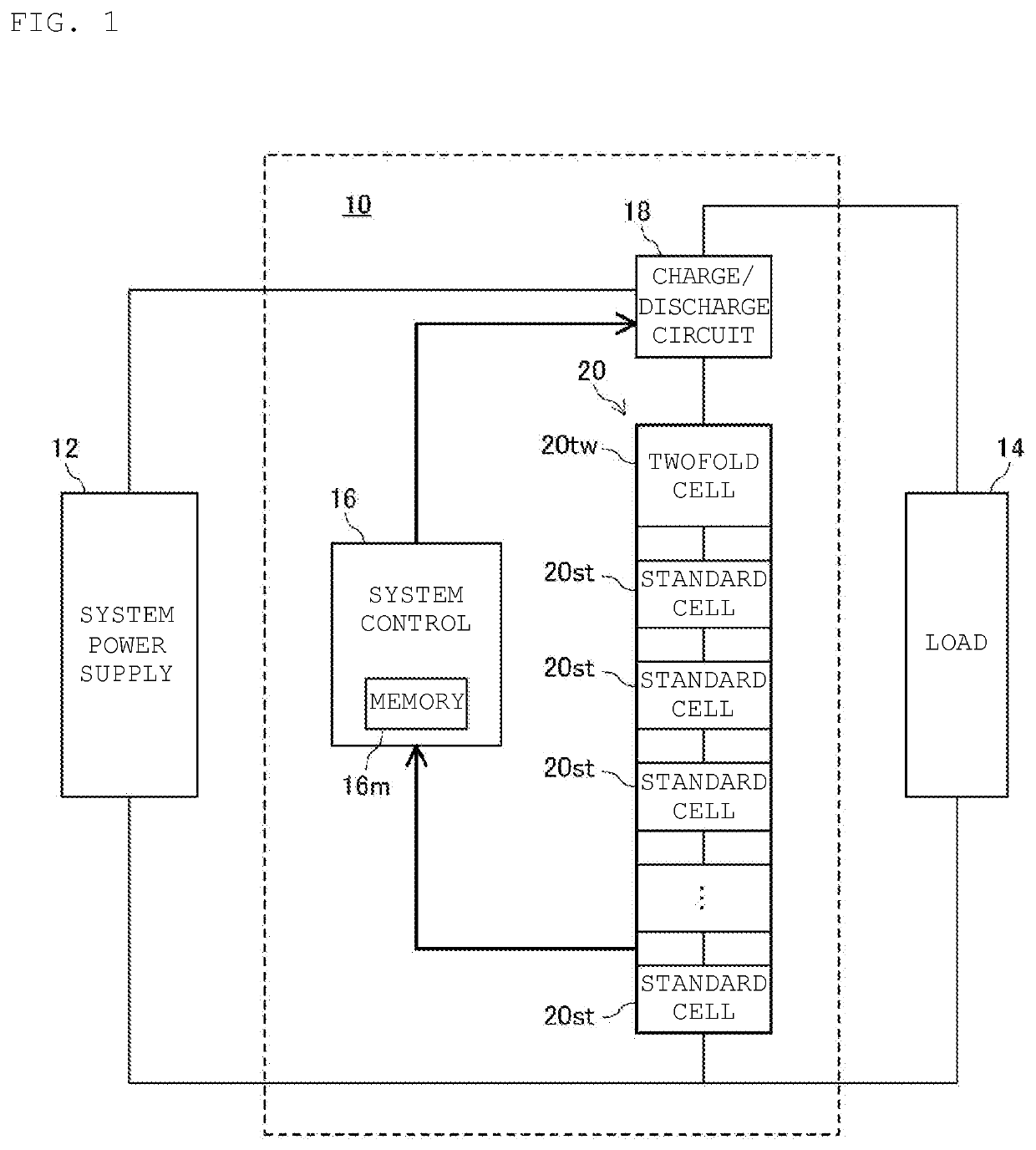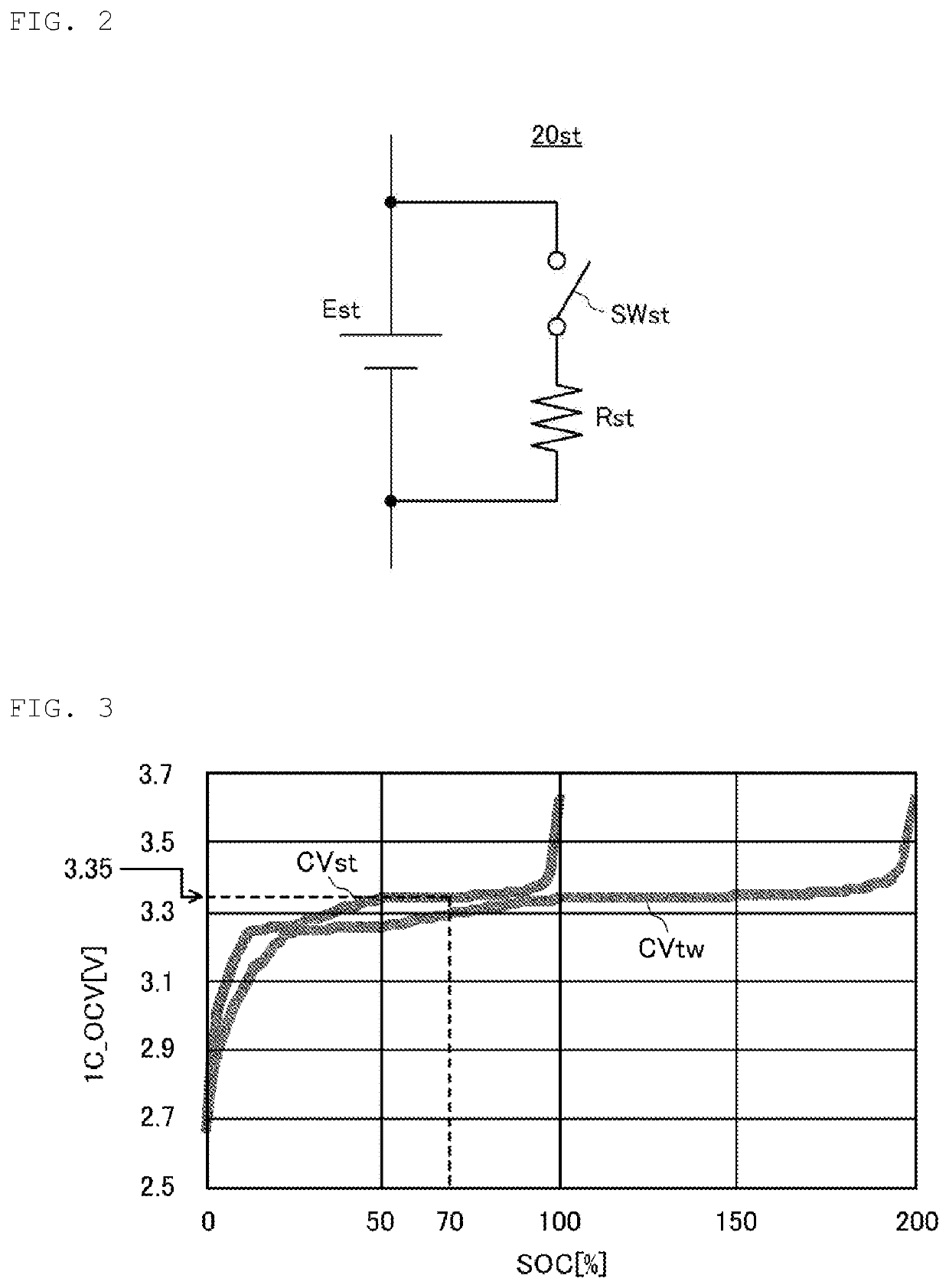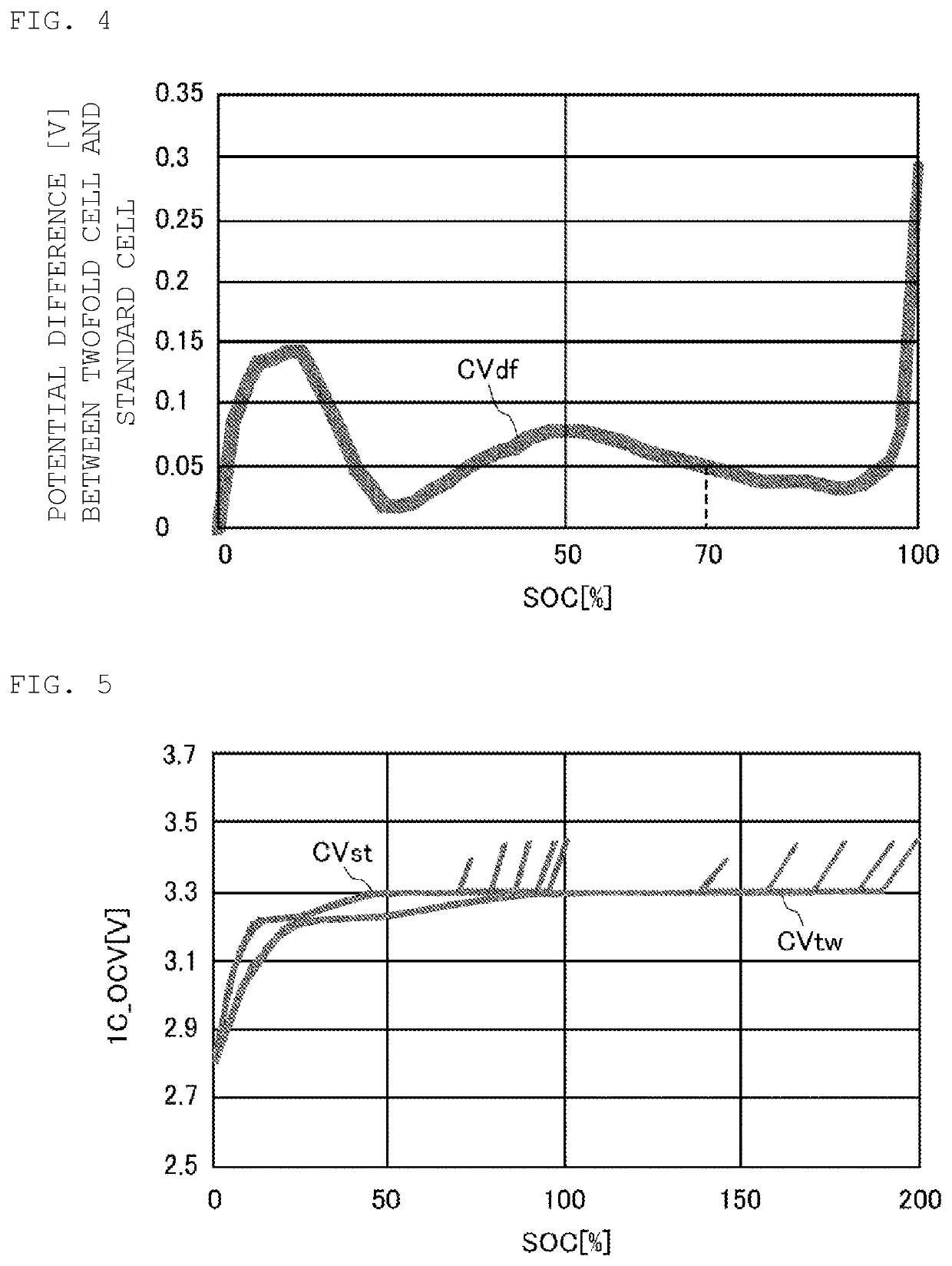Assembled battery circuit, capacitance coefficient detection method, and capacitance coefficient detection program
a battery circuit and capacitance coefficient technology, applied in secondary cell servicing/maintenance, instruments, electrochemical generators, etc., can solve the problems of inability to determine the state of deterioration, method accuracy is limited, and it is not easy to detect soc in the potential plateau region. achieve the effect of easy and accurate manner
- Summary
- Abstract
- Description
- Claims
- Application Information
AI Technical Summary
Benefits of technology
Problems solved by technology
Method used
Image
Examples
Embodiment Construction
[0036]Referring to FIG. 1, an assembled battery circuit 10 according to an exemplary embodiment includes a system control circuit 16 that controls charging and discharging of an assembled battery 20 through a charge / discharge circuit 18. Moreover, the charge / discharge circuit 18 charges the assembled battery 20 with power supplied from a system power supply 12 and / or discharges power from the assembled battery 20 in response to a load 14 under control of the system control circuit 16.
[0037]In an exemplary aspect, the assembled battery 20 is formed by connecting in series Kmax standard cells 20st and a single twofold cell (specific cell) 20tw. The plurality of standard cells 20st and the twofold cell 20tw are formed by stacking positive electrodes and negative electrodes with separators interposed therebetween, storing in a laminate, charging with an electrolyte solution, and then sealing. The constant Kmax is an integer of 2 or larger, for example, “7” in an aspect. The standard cel...
PUM
| Property | Measurement | Unit |
|---|---|---|
| open-circuit voltage | aaaaa | aaaaa |
| open-circuit voltage | aaaaa | aaaaa |
| capacitance | aaaaa | aaaaa |
Abstract
Description
Claims
Application Information
 Login to View More
Login to View More - R&D
- Intellectual Property
- Life Sciences
- Materials
- Tech Scout
- Unparalleled Data Quality
- Higher Quality Content
- 60% Fewer Hallucinations
Browse by: Latest US Patents, China's latest patents, Technical Efficacy Thesaurus, Application Domain, Technology Topic, Popular Technical Reports.
© 2025 PatSnap. All rights reserved.Legal|Privacy policy|Modern Slavery Act Transparency Statement|Sitemap|About US| Contact US: help@patsnap.com



